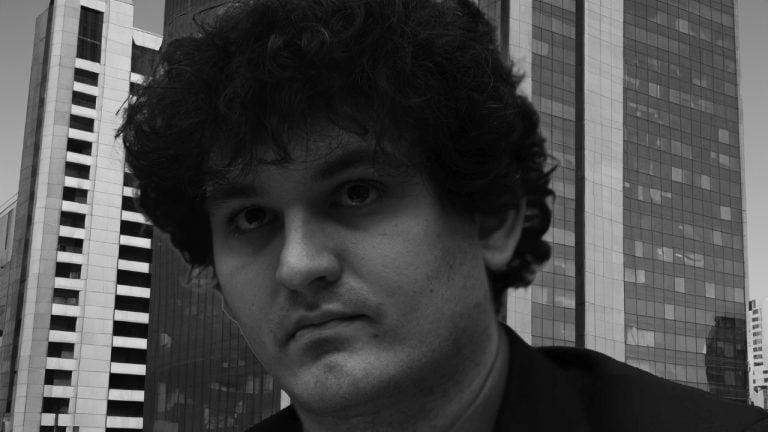
Prosecutors Probe Sam Bankman-Fried's Message Deletion Practices
During an ongoing hearing, federal prosecutors interrogated Sam Bankman-Fried, the CEO of now-bankrupt crypto exchange FTX, regarding his message deletion practices and the alleged use of customer funds. The prosecutors focused on Bankman-Fried's use of the encrypted messaging app Signal and his enabling of auto-delete features in 2021. Bankman-Fried mentioned that he did not seek specific legal approval for auto-deleting messages but believed it was within FTX's document retention policy implemented that year.
Bankman-Fried's Testimony Recorded by Matthew Russell Lee
Matthew Russell Lee from the Inner City Press recorded Bankman-Fried's testimony during the hearing. Prosecutors asked Bankman-Fried if he should have preserved messages with former Alameda CEO Caroline Ellison, which contained financial spreadsheets. Bankman-Fried admitted that verbal discussions were not required to be reported but should have been preserved.
Prosecutors Question Deletion of Messages Regarding Alameda Shutdown
Prosecutors also inquired about Bankman-Fried's deletion of messages concerning the shutdown of Alameda and its reported $13 billion hole. Bankman-Fried responded that he did not recall such conversations, but the prosecutors continued to probe further.
FTX Customer Funds Transferred through Alameda Entity
Prosecutors questioned Bankman-Fried about FTX customer funds being transferred through Alameda entity North Dimension bank accounts. Bankman-Fried signed documents listing it as a trading firm but claimed he was not aware of it conducting trades. When asked if he discussed the use of the account to accept customer funds with lawyers, Bankman-Fried was uncertain about whether he had.
Bankman-Fried's Lack of Discussion with Lawyers about Customer Funds
Bankman-Fried stated that he did not discuss with lawyers that the funds were coming from FTX customer accounts. He clarified that he would not characterize it that way and did not have conversations with lawyers regarding this matter.
Bankman-Fried Maintains Innocence and Emphasizes Non-Obligatory Response
Throughout the testimony, Bankman-Fried maintained his innocence and denied any intention to embezzle customer assets. He expressed this sentiment even when he was not obligated to answer the prosecutor's question. His lawyer, Mark Cohen, reminded him of this fact and questioned the length of the proceedings.
Proceedings Set to Resume with Extensive Line of Inquiry
The proceedings in Judge Kaplan's courtroom will resume on Friday morning Eastern Time (ET). The prosecution team is preparing for an extensive line of inquiry. Despite facing multiple charges, Bankman-Fried has pleaded not guilty to all allegations. It is worth noting that the federal prosecutors conducted the interrogation without the presence of a jury.
What are your thoughts on Bankman-Fried's testimony and cross-examination by federal prosecutors? Share your opinions in the comments section below.
Frequently Asked Questions
How much money should my Roth IRA be funded?
Roth IRAs are retirement accounts where you deposit your own money tax-free. These accounts cannot be withdrawn until you turn 59 1/2. If you decide to withdraw some of your contributions, you will need to follow certain rules. First, your principal (the original deposit amount) cannot be touched. This means that regardless of how much you contribute to an account, you cannot take out any more than you initially contributed. If you are able to take out more that what you have initially contributed, you must pay taxes.
The second rule is that your earnings cannot be withheld without income tax. Also, taxes will be due on any earnings you take. Consider, for instance, that you contribute $5,000 per year to your Roth IRA. Let's also assume that you make $10,000 per year from your Roth IRA contributions. This would mean that you would have to pay $3,500 in federal income tax. This leaves you with $6,500 remaining. Because you can only withdraw what you have initially contributed, this is all you can take out.
Therefore, even if you take $4,000 out of your earnings you still owe taxes on $1,500. Additionally, half of your earnings would be lost because they will be taxed at 50% (half the 40%). So even though your Roth IRA ended up having $7,000, you only got $4,000.
There are two types if Roth IRAs, Roth and Traditional. Traditional IRAs allow pre-tax contributions to be deducted from your taxable tax income. Your traditional IRA can be used to withdraw your balance and interest when you are retired. A traditional IRA can be withdrawn up to the maximum amount allowed.
A Roth IRA doesn't allow you to deduct your contributions. However, once you retire, you can withdraw your entire contribution plus accrued interest. There is no minimum withdrawal requirement, unlike traditional IRAs. Your contribution can be withdrawn at any age, not just when you reach 70 1/2.
Is physical gold allowed in an IRA.
Not only is gold paper currency, but it's also money. It's an asset that people have used for thousands of years as a store of value, a way to keep wealth safe from inflation and economic uncertainty. Investors use gold today as part of their diversified portfolio, because it tends to perform better in times of financial turmoil.
Many Americans now invest in precious metals. Although owning gold does not guarantee that you will make money investing in it, there are many reasons to consider adding gold into your retirement portfolio.
One reason is that gold historically performs better than other assets during financial panics. Between August 2011 to early 2013, gold prices rose close to 100 percent while the S&P 500 fell 21 per cent. Gold was one of the few assets that performed better than stocks during turbulent market conditions.
One of the best things about investing in gold is its virtually zero counterparty risk. You still have your shares even if your stock portfolio falls. But if you own gold, its value will increase even if the company you invested in defaults on its debt.
Finally, gold provides liquidity. This means that, unlike most other investments, you can sell your gold anytime without worrying about finding another buyer. Gold is liquid and therefore it makes sense to purchase small amounts. This allows you to profit from short-term fluctuations on the gold market.
How to open a Precious Metal IRA
The first step in opening an Individual Retirement Account, (IRA), is to decide if it's something you want. To open the account, complete Form 8606. To determine which type of IRA you qualify for, you will need to fill out Form 5204. This form must be submitted within 60 days of the account opening. Once you have completed this form, it is possible to begin investing. You might also be able to contribute directly from the paycheck through payroll deduction.
Complete Form 8903 if your Roth IRA option is chosen. Otherwise, the process will be identical to an ordinary IRA.
To be eligible to have a precious metals IRA you must meet certain criteria. The IRS states that you must be at least 18 and have earned income. Your earnings cannot exceed $110,000 per year ($220,000 if married and filing jointly) for any single tax year. Contributions must be made regularly. These rules apply regardless of whether you are contributing directly to your paychecks or through your employer.
You can use a precious-metals IRA to purchase gold, silver and palladium. However, you can't purchase physical bullion. This means you won’t be able to trade stocks and bonds.
You can also use your precious metallics IRA to invest in companies that deal with precious metals. This option is available from some IRA providers.
There are two major drawbacks to investing via an IRA in precious metals. First, they are not as liquid or as easy to sell as stocks and bonds. It's also more difficult to sell them when they are needed. They don't yield dividends like bonds and stocks. Also, they don't generate dividends like stocks and bonds. You will eventually lose money rather than make it.
Statistics
- This is a 15% margin that has shown no stable direction of growth but fluctuates seemingly at random. (smartasset.com)
- Contribution limits$6,000 (49 and under) $7,000 (50 and up)$6,000 (49 and under) $7,000 (50 and up)$58,000 or 25% of your annual compensation (whichever is smaller) (lendedu.com)
- If you accidentally make an improper transaction, the IRS will disallow it and count it as a withdrawal, so you would owe income tax on the item's value and, if you are younger than 59 ½, an additional 10% early withdrawal penalty. (forbes.com)
- The price of gold jumped 131 percent from late 2007 to September 2011, when it hit a high of $1,921 an ounce, according to the World Gold Council. (aarp.org)
- If you take distributions before hitting 59.5, you'll owe a 10% penalty on the amount withdrawn. (lendedu.com)

















